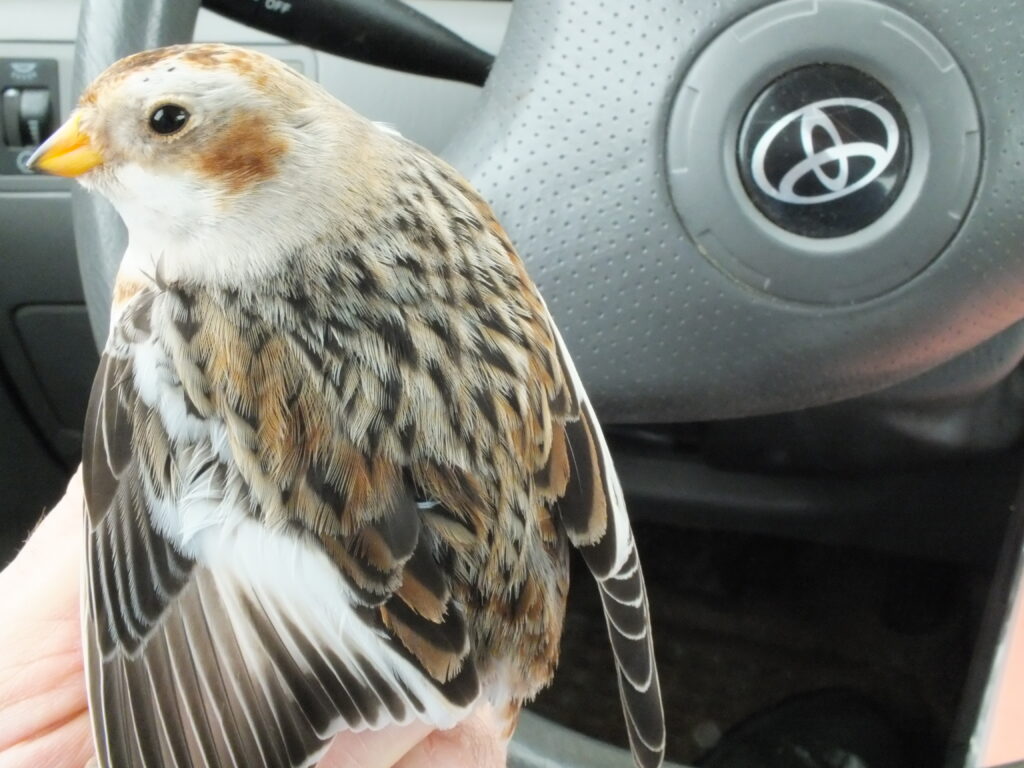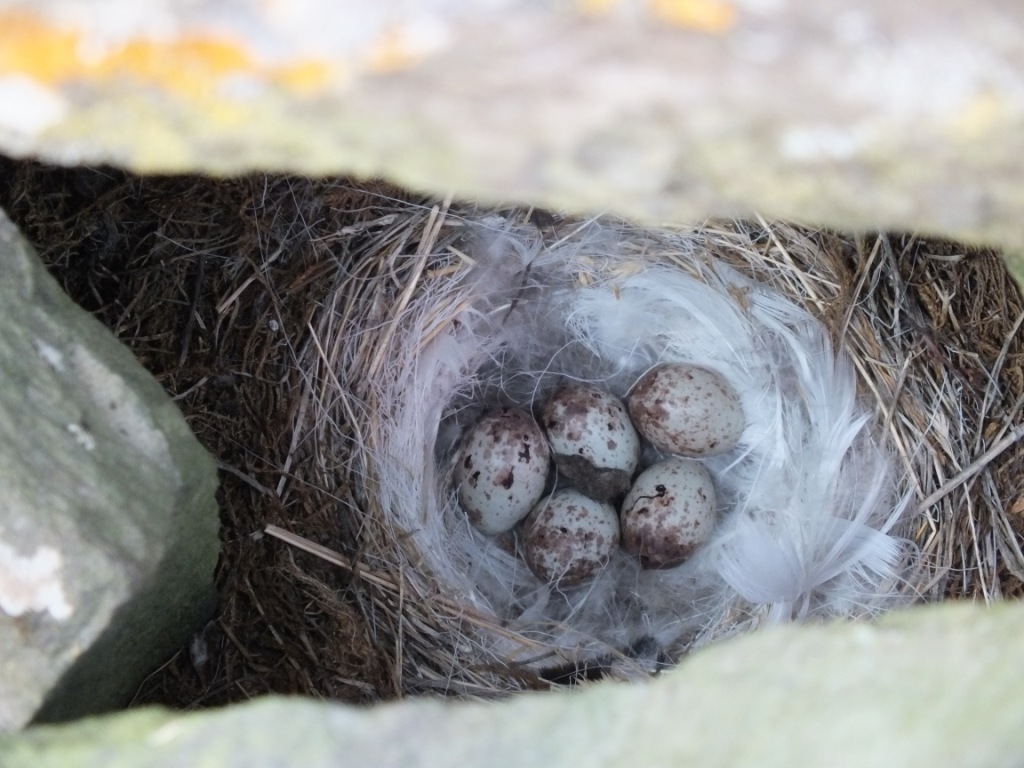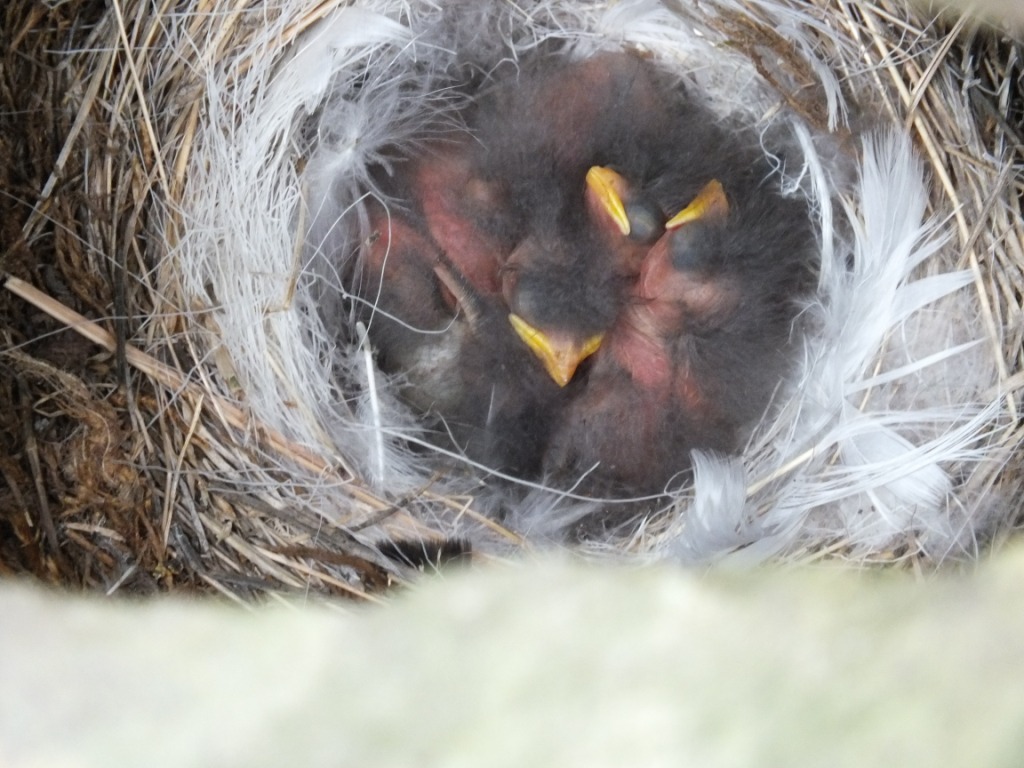“What!? Snow Buntings in the heat of summer!?” I can hear your exclamations now. But we have some great news. Oliver Love, Christie Macdonald, and I started the Canadian Snow Bunting Network over a dozen years ago to get banders interested in braving cold Winter conditions in order to try and unravel some of the mystery surrounding these wonderful birds that we see for only a couple of months of the year. Not much was known about their breeding biology and about their movement between their Summer nesting grounds (some of them in the VERY high Arctic) and their Winter grounds.
With small passerines you have to band a lot of them to begin to get data on them. It’s always a thrill when of “your” birds is recovered at a far-off location. Several southern Ontario birds (including one of ours) has been recovered on the West coast of Greenland!
The University of Windsor (Oliver Love) has been trying to sort out what happens with these birds in the Arctic. For a couple of years he’s had a team of students chasing them down in Iqaluit and area. I’ve worked with some of the members of that team spending hours wandering the tundra searching for nests and then following their success….or failure. Grad student Samuelle Provencal-Simard (“Sam”) currently heads up that team. Recently she sent out a request for information on a banded bird that had been recaptured at a nest in Iqaluit. It was one of ours!!! Marnie had caught and banded this female in mid-January at her Farm and the recovery was in mid-July. It will be interesting to follow this bird and see how it does….and whether it returns.
One of the goals of the Canadian Snow Bunting Network is to find out the movements of these birds in Winter and sort out their migration routes. I mean, how did Marnie’s bird get from her farm to Iqaluit. Did it take the St. Lawrence River – Labrador coast – Baffin Island route? (Many of the banding recoveries of birds banded in southern Ontario show that this is an important migration corridor for Snow Buntings.) Or…? Bruce Murphy in New Liskeard in northern Ontario has “exchanged” birds with banders in southern Ontario, which suggests a more direct N-S route. Unravelling this question has become one of Sam’s major projects. This past Winter she attached MOTUS tags on a number of Snow Buntings. Some were captured by David Lamble in Fergus. One bird was released there; one was transported to Windsor and released; another was transported to Port Rowan and released.
Another bird was captured by our team at the York Airport and, after radio tagging, released there.
A MOTUS tag emits a radio signal unique to that particular bird. If the bird is relatively close to a receiver it will register and there will be a record of that bird’s travels and timelines. Sam let me know that one of our birds (not the one mapped below) actually travelled 1300 kilometers during its time in southern Ontario, flying from one foraging site to another – evidently over quite a wide area. [A question I have: when a bird finds a rich feeding site, like our airport site, why does it bother to wander over long distances looking for other food sources? For example, there have been a couple of instances where birds banded in “the Triangle” – 3 feeding sites about 10 kilometers from each other (York Airport, Nancy’s Dry Lake Road site, and Marnie’s farm site) – have been recaptured on the same day at two of these sites. Why the extra travel? Predator avoidance? Or…?]
Below are 4 maps showing the movements of 4 MOTUS tagged Snow Buntings.
This gets more and more interesting – and exciting!








SOO was the bunting in good health? did it show any signs of injury? How did it survive the heat? Any ideas? How was it captured?
Another example of birds not reading the books or what they are supposed to do!!!!!!
Hi Dick. The bird was in good health. It was captured using a modified noose carpet at the entrance to its nest cavity.